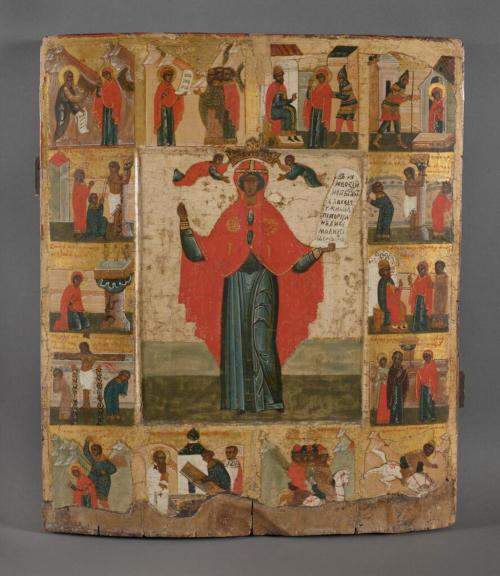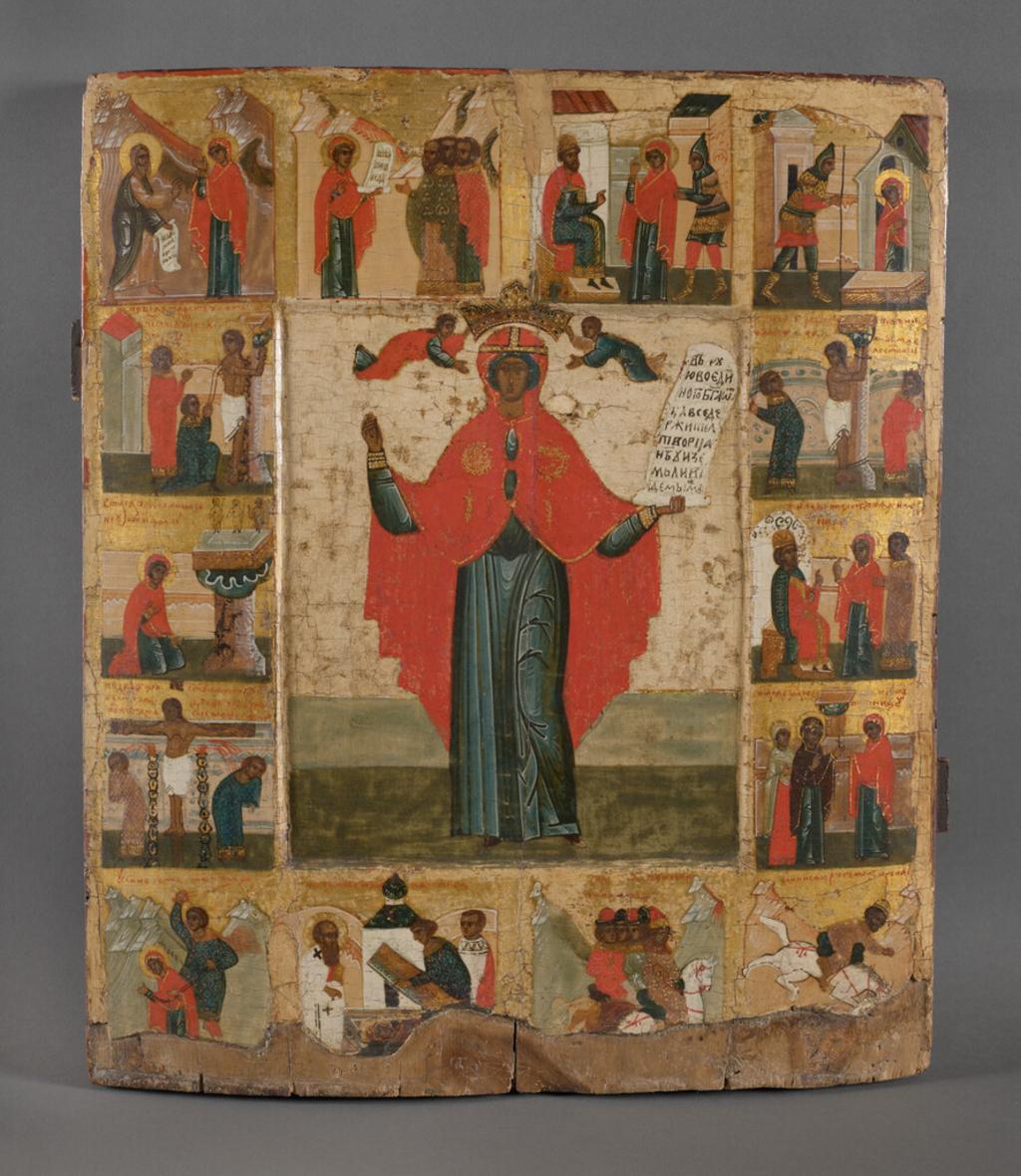
Saint Paraskeva (Pyatnitsa) with Scenes from Her Life
Date: early 15th century
Translated Inscription:Inscribed: I believe in one God, Father Almightly, Creator of Heaven and Earth visible
Period: Russian Byzantine
Public Geography:Russia, Novgorod school
Medium: Tempera and gold leaf on canvas mounted on wood
Dimensions:
19 3/4 × 17 1/2 × 1 in. (50.2 × 44.5 × 2.5 cm)
Classification: Painting
Object number: 1985-057.33 DJ
Not on view
EssayNamed “Friday” by her pious parents after the day of Christ’s suffering, Paraskeva (or Pyatnitsa in Russian) was born in a province of Rome in the 2nd century CE. She was arrested for preaching Christianity during the reign of Emperor Antoninus Pius (138–161 CE). Paraskeva refused to denounce her religion despite being imprisoned, tortured, and ultimately beheaded. She is shown here in her usual red maphorion (hooded robe), holding a scroll that reads, “I believe in one God, Father Almighty, Creator of Heaven and Earth.” Two angels place a crown atop Paraskeva’s head. The crown is a later possibly 18th-century addition, though the angels are original. Paraskeva stands surrounded by scenes from her eventful life (beginning at the top row, from left to right): Christ appears to Paraskeva, bringing her a scroll that reads, “I believe in one God”; she preaches from the same scroll; she is summoned before the governor; she kneels in prayer as a soldier arrives. Short inscriptions in Russian identify the remaining scenes. On the left border, from top to bottom, they read: “The emperor [orders] to tear Saint Pyatnitsa with irons”; “Saint Pyatnitsa destroys the idols”; “The emperor [orders] to hang Saint Pyatnitsa on a pole and to burn her ribs with burning candles.” On the right, from top to bottom, we find: “[illegible] Saint Pyatnitsa with leather straps”; “‘Bring me Saint Pyatnitsa’ said the Emperor”; “The Holy Mother of God healed Saint Pyatnitsa.” Finally, the bottom border, from left to right, is labeled: “The beheading of Saint Pyatnitsa”; “Burial of Saint Pyatnitsa”; [illegible except for one word] “crime”; “Emperor [He]gemon thrown by a stubborn horse.”
Public Website: Yes
Visual Keywords
:
Movement/Period
:
Geographic Maker
:
Work Type
:
Exhibitions:
- Imprinting the Divine: Byzantine & Russian Icons from The Menil Collection

